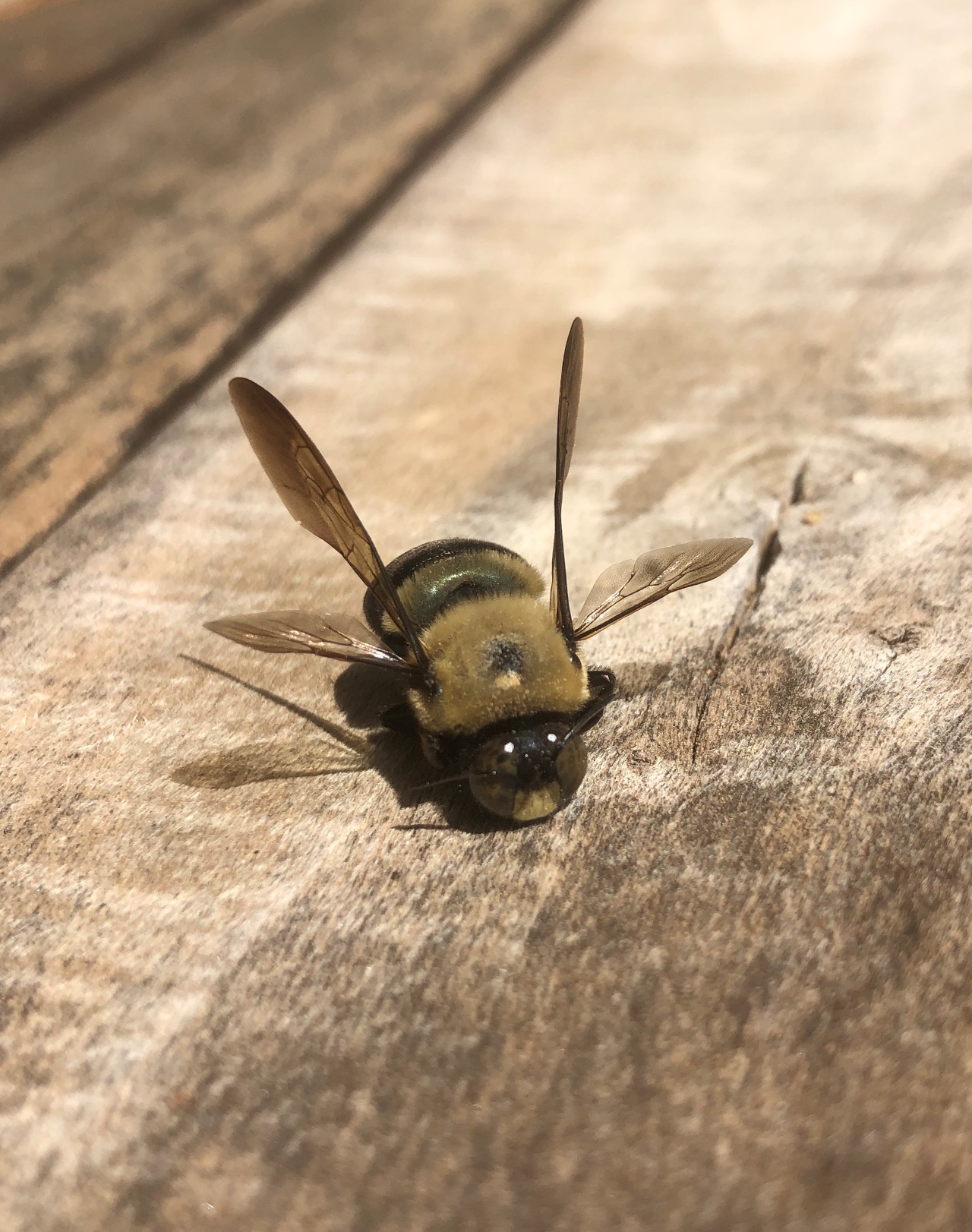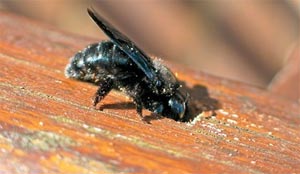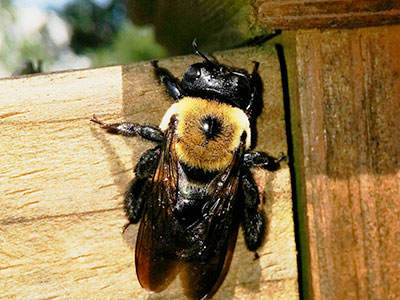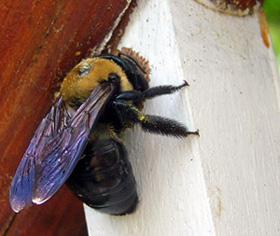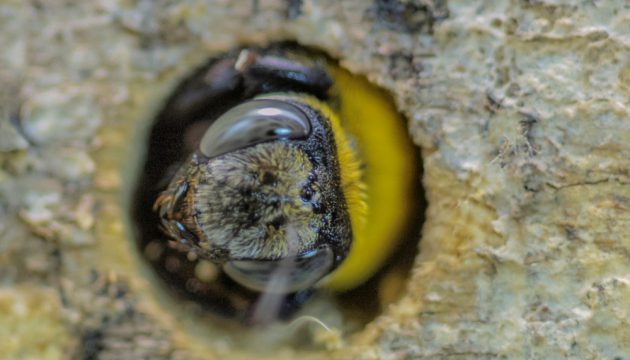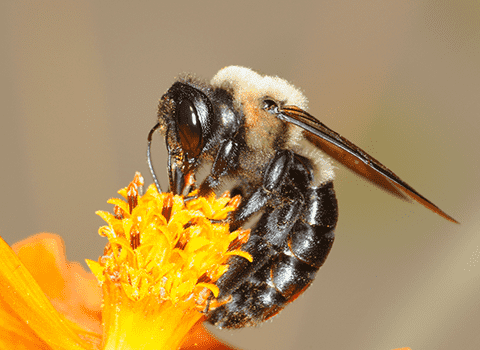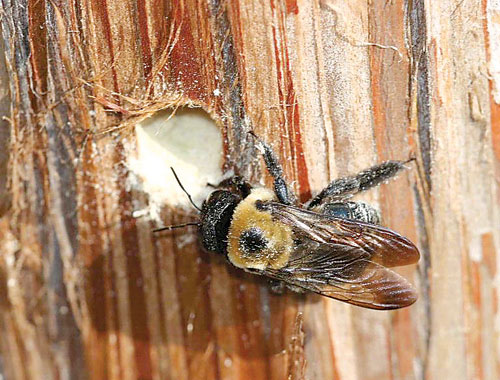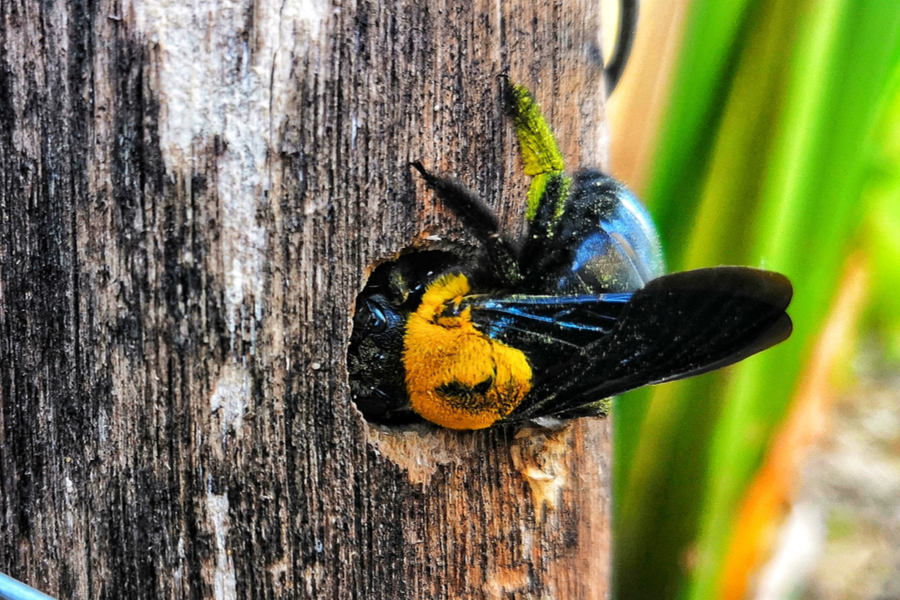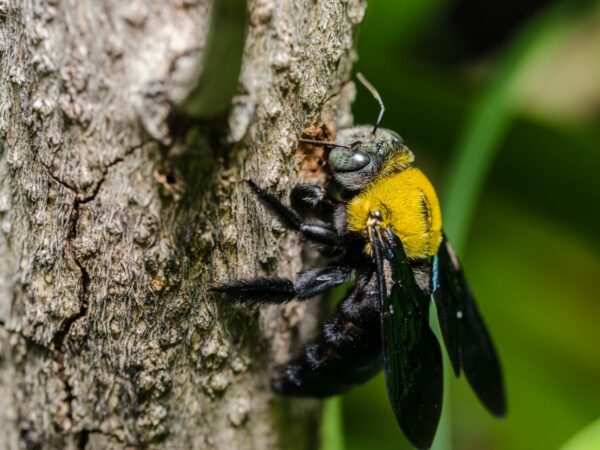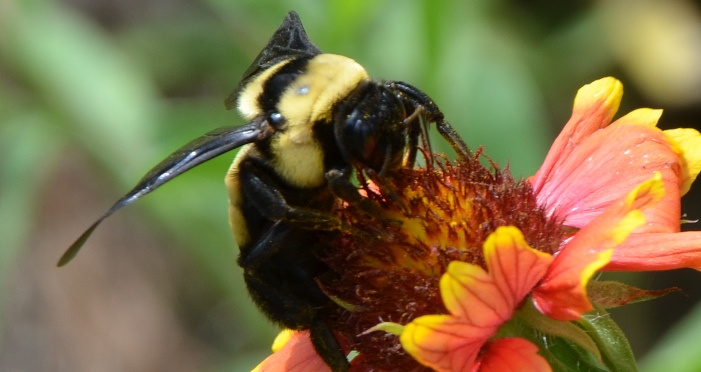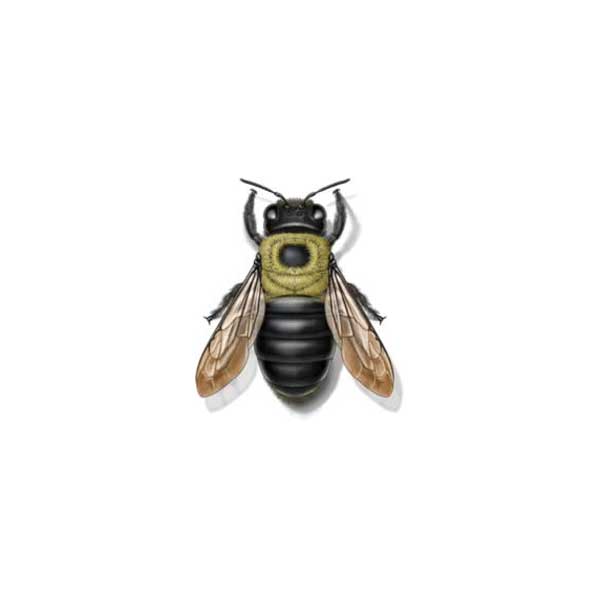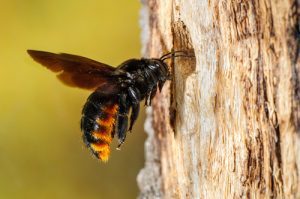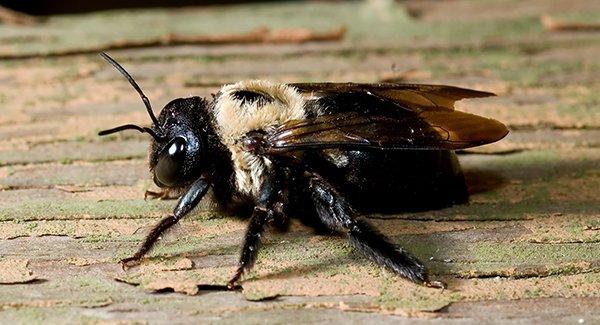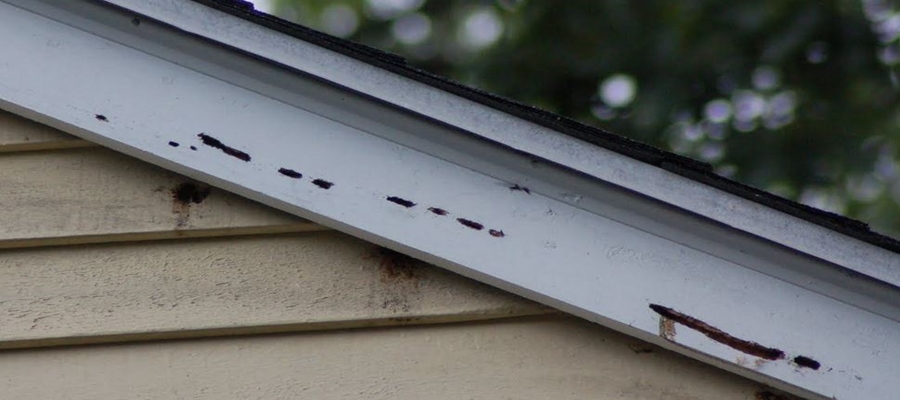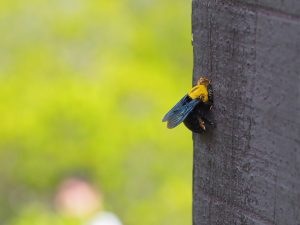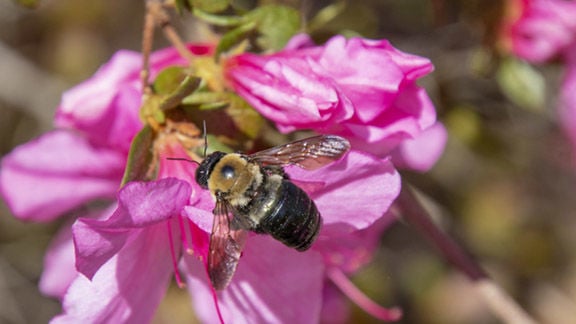Carpenter Bees Pollen Siding
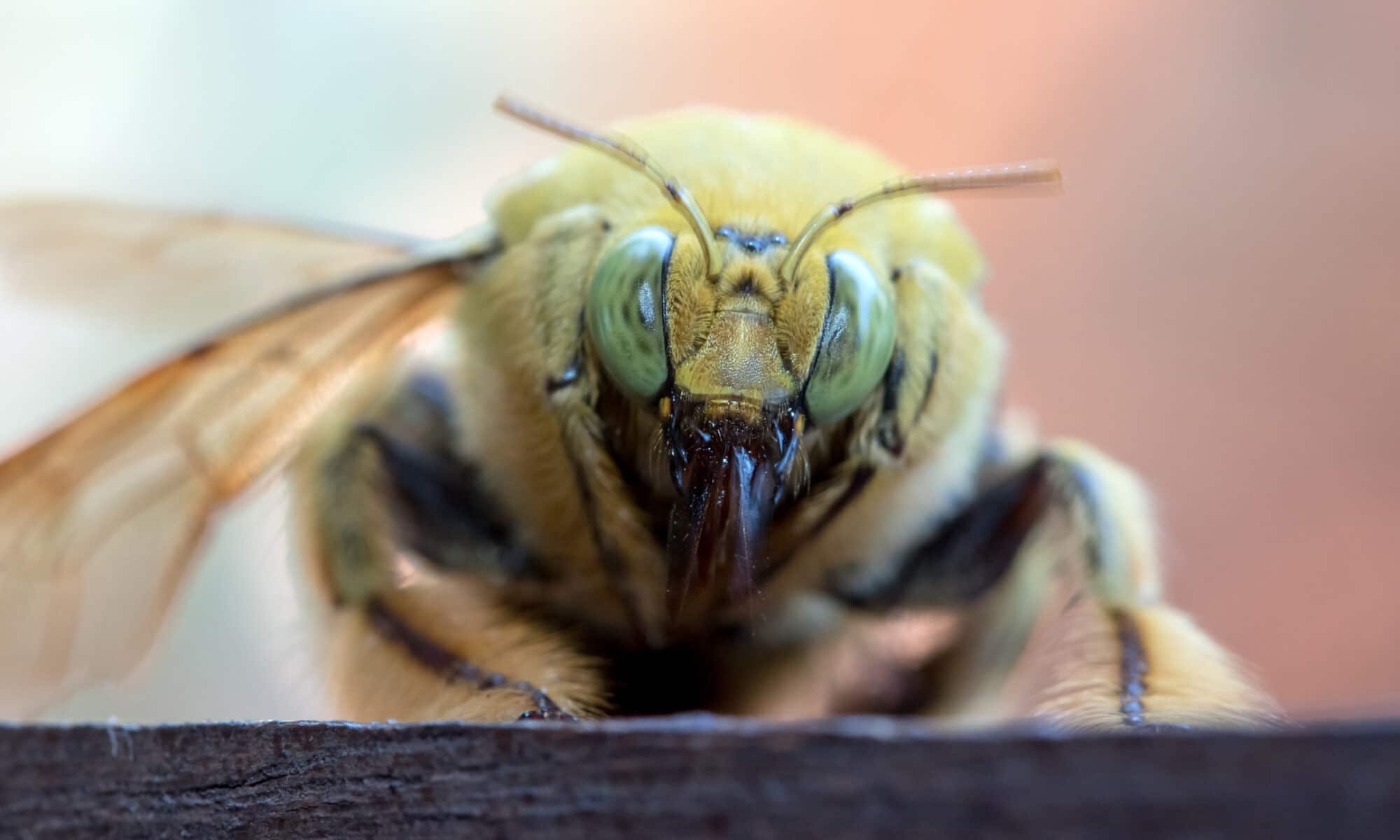
Carpenter bees also can left pollen crumb around your furniture.
Carpenter bees pollen siding. The carpenter bee is so called because of where it chooses to make it s home. It sounds to me like you have an infestation of carpenter bees. This system of chambers containing eggs may extend 2 or more feet through the wood parallel to the grain. If you wonder the yellow stains around your living space it might be another sign of carpenter bees infestation.
The female carpenter bee is the one who makes the hole by chewing through the wood. Carpenter bees prefer to excavate their nests in soft unpainted wood such as the back side of fascia boards siding window trim and porch ceilings. Not all bee species are beneficial however. Redwood pine cypress and cedar seem to be their favorite wood species.
These bees love to drill into bare or unpainted softwoods. As it is their primary food source you can also detect the sign by it. Common carpenter bee nesting sites include eaves rafters fascia boards siding wooden shake roofs decks and outdoor furniture. Carpenter bees xylocpa spp are quite different from the garden bumblebees bombus spp and common honeybees apis spp that are so important for plant pollination carpenter bees are so named for their nesting behavior which involves burrowing into dead wood material which can include the structural wood in homes and other buildings.
Painted or pressure treated wood is much less susceptible to attack. They make holes in siding soffits decks posts and the painted or bare wood of barns and sheds especially when the paint is old hottel says. Instead they burrow into soft woods such as the siding of a house to live in and lay larvae. The small holes that you see in your siding soffits window frames etc.
Carpenter bees cause damage to wooden structures by boring into timbers and siding to construct nests. If you read through our carpenter bee control article you ll learn these bees will readily crawl under siding and facia boards to drill nests which will then effectively be hidden and secure. The carpenter bees will excess feces and leave yellow stain. They are solitary bees and are not part of a larger hive community.
Carpenter bees prefer unpainted weathered wood especially softer varieties such as redwood cedar cypress and pine. Sound undecayed wood without paint or bark is usually selected for nests. Carpenter bees crawl between cracks in siding and roofing where they bore holes about 1 2 inch wide and 1 or 2 inches long. This becomes a chamber where the female lays eggs leaves a food ball of pollen and then seals the chamber.
The nests weaken structural wood and leave unsightly holes and stains on building surfaces. They are doing damage to the fascia and the spraying by pest control people doesn t seem to be doing a whole lot of good.


